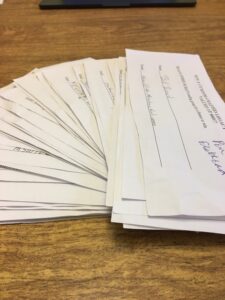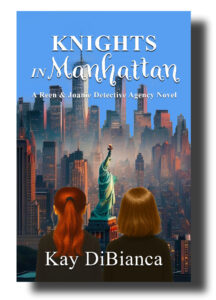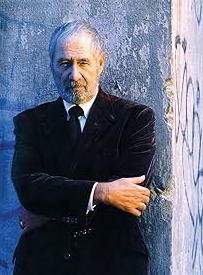
By PJ Parrish
I was about fourteen when I read The Collector by John Fowles. Probably too young for a novel about a lonely pyschopath who abducts a young woman and keeps her captive in a remote English farmhouse. But in those days, during my peripatetic teenage existance, I was captive in whatever library was nearby. So I read a lot of inappropriate stuff, including most of Nabokov. Even today, novels about captives get to me, in a way other thrillers do not. I don’t mean thrillers wherein a child is kidnapped and the clock is ticking. Or even wherein the victim is long gone and the cold case haunt-hunt is on. I like the books where the captive still has a voice. This is what we have here with today’s First Page Critique. Not merely a captive. But a voice. Let’s read and then talk.
Never Spoken
She was eight years in chains. I think I’ve been in this place, one window, barred and filthy, lights too high to reach, bed, water, battery radio and a book, about 25 weeks now. She endured eight years in the book. I am a novice.
I’ve talked to no one. Well, I have grunted with; the faceless person that brings me food and water each day, but no talk.
I know why I am here. Money of course. Someone is probably telling some grand story about political values to those who will listen, the press loves that stuff. But I am pretty sure it is money.
And I am fine. No injuries. I sleep at night, read during the day, listen to the news, watch out the window. I am fed fresh food. Better than the packaged crap from Tesco. They probably do this to keep the evidence trail concealed. In the book she said she never knew if they were going to rape her or just kill her. They did neither, but they fed her well. Fresh food, no packaging.
She said rape or “just kill”. She thought killing was better.
I have learned sounds. In the book she says that where senses lack, sound is easiest to be entertained with. She said not to think about the why, as that will drive you crazy. She said make it all a game and play with it. So, I play with my senses. I didn’t at first, but it’s been a half year now. It is a game.
I can hear vehicles come and go outside. There is a door a few rooms away, that gives a creak, just before it latches with a click. Water runs in the wall from above, toilet flush or drain. I am starting to be annoyed by it, as if I am the second-floor tenant in a three-floor walk-up.
I hear the coffee in the morning, a moka pot, he makes good coffee. I hear his footsteps when he is walking to my hatch. I call it the doggie door, big enough to pass things through but too small to climb through unless I starve myself.
And I have the book. A book on being a hostage in first person narrative. A book he gave me without instruction, a guide on how to survive or die, my choice.
_________________________________________
I really like this submission. Yes, it has a couple of issues, including with its opening paragraph, which with a little tweaking can go from good to really tantalyzing. We’ll get to that in a second. But allow me a little rope so we can talk first about this sub-genre of captive narrators. What interests me in these novels is not so much the solving of the crime as the psychological push-and-pull in the narrative (or in many cases dual narratives).
In John Fowles The Collector, we are introduced to the abductor, Frederick Clegg. This first person narrive sets up his chilling, self-justifying thought process and his obsession with his victim Miranda. But part 2 switches to Miranda’s diary, and we see her as a completely different person that Clegg believes her to be. We get her perspective on her own fears, inner demons and, this being John Fowles, her thoughts on class struggle.
{{{{Spoiler alert}}}}
The ending is bleak. Clegg finds her diary and plans a suicide pact. Miranda dies from neglect. After he reads in the diary that she never loved him, he buries her body. The final scene is Clegg in a nearby town, stalking another young girl who resembles Miranda.
Another captive novel I liked is Chevy Steven’s Still Missing. The first person narrator is abducted but the narrative toggles between then and eight years later, where she is trying to re-piece her psyche via psychiatry sessions. (Hence the title, she is still missing).
And so to our submission. Like Chevy Stevens does, our writer relies heavily on sensory details to create tension and gain our sympathy. Here’s Steven’s description of the abduction moment:
I realized he was too close behind me. Something hard pressed into my lower back.
I tried to turn around, but he grabbed a handful of my hair and yanked my head back so fast and so painfully I thought a piece of my scalp would tear off. My heart slammed against my rib cage, and blood roared in my head. I willed my legs to kick out, run— to do something, anything— but I couldn’t make them move.“Yes, Annie, that’s a gun, so please listen carefully. I’m going to let go of your hair and you’re going to remain calm while we take a walk out to my van. And I want you to keep that pretty smile on your face while we do that, okay?”
“I—I can’t—” I can’t breathe.
Voice low and calm against my ear, he said, “Take a deep breath, Annie.”
I sucked in a lungful.
“Let it out nice and easy.”
I exhaled slowly.
“Again.” The room came back into focus.
“Good girl.” He released my hair.
Everything seemed to be happening in slow motion. I could feel the gun grinding into my spine as he used it to push me forward. He urged me out the front door and down
the steps, humming a little melody. While we walked to his van, he whispered into my ear.“Relax, Annie. Just pay attention to what I tell you and we won’t have any problems. Don’t forget to keep smiling.”
As we moved farther from the house I looked around— somebody had to be seeing this— but no one was in sight. I could hear small sounds behind me, could tell he was doing something back there, preparing for something. I waited for the click of the gun being cocked. My body shook with terror. Was this it for me? My life was going to end with me facedown in the back of a van? I felt a needle stab into the back of my thigh. I fl inched and tried to reach back to touch it. Fire crawled up my leg.
When she wakes up, again Steven keeps with SENSORY DETAILS: the feel of a scratchy blanket, the faint scent of perfume. A pillowcase in the wrong color. This is what our writer today is doing well — the creak of a door and a click as it closes, the smell of coffee, the sound of running water and a toilet flushing above. The writer is giving us JUST ENOUGH sensory detail so we can FEEL her limited existence. The writer is trying to show us, not tell us, the horror.
Another thing I like about this submission: The mysterious book. It is introduced in the first paragraph, a veritable Chekov’s gun. Chevkov advised other writers: “If you say in the first chapter that there is a rifle hanging on the wall, in the second or third chapter it absolutely must go off. If it’s not going to be fired, it shouldn’t be hanging there.” Our writer tells us book was given to her so she can learn from a previous hostage how to survive. Nice! I have to trust this book will figure prominently in the plot. If not, well, I will sic Chekov’s ghost on you, dear writer.
Now, one last comment before we go to a little line editing. That opening paragraph. It has two terrific teases inbedded in it: The book. And the fact the book’s writer endured her captivity for eight years, and our narrative has a long rough road ahead. A really good set-up.
But if I might, I am going to suggest that the paragraph can be better. It’s a tad confusing as it. I don’t normally rewrite, but I can’t help it here. Maybe something like this:
She was here for eight years. I think I’ve been in this place for only about six months now. I am not chained like she was. I can move around my prison some. One window, barred and filthy, lights too high to reach, a bed, a water bucket, a battery radio. And one book. The book she left here. The book she wrote. Eight years…
I am a novice.
Now this might not exactly serve your purpose. But the book is THE TELLING DETAIL. I strongly suggest you break it out on its own. I also think the novice line needs to stand on its own, as it goes right to the heart of her mindset.
Speaking of mindsets, I will ask the group: Do you think this needs a tad more emotion in her thoughts? She seems awfully at ease with her situation, given that the writer stresses what is tolerable, rather than terrifying, about it. I get no really gripping sense of terror from our narrator.
A quick line edit, as this is pretty clean. My comments in red.
She was eight years in chains. If you want to keep this detail, you have to tell us if the narrator is also chained. If you mean this symbolically, I don’t think you need it. I think I’ve been in this place, one window, barred and filthy, lights too high to reach, bed, water, battery radio and a book, about 25 weeks now. She endured eight years in the book. I am a novice. Like this paragraph kicker. But note rewrite suggestion.
I’ve talked to no one. Well, I have grunted with; the faceless person that brings me food and water small detail: You said she has water in her “cell.” each day, but no talk. She has a hatch or dog door, no? Can she see anything? A telling detail: what kind of shoes does he wear? Beat-up sneakers or shiny broques hint at something. You need to start building the bad guy in the reader’s imagination.
I know why I am here. Money of course. Someone is probably telling some grand story about political values to those who will listen. The press loves that stuff. But I am pretty sure it is money. You said she has a radio. Surely in 6 months she has heard news of her abduction. Why be so vague? WHO IS MISSING HER? You missed a chance to drop a nugget about her background. If this is about money, she comes from wealth, no? Can you give a hint?
And I am fine. No injuries. I sleep at night, read during the day, listen to the news, watch out the window. I am fed fresh food. Better than the packaged crap from Tesco. So we are in UK. I only know that cuz I Googled Tesco. Might want to drop another hint. They probably do this to keep the evidence trail concealed. I don’t understand this line. In the book she said she never knew if they were going to rape her or just kill her. They did neither, but they fed her well. Fresh food, no packaging.
She said rape or “just kill”. She thought killing was better. Are you going to quote from the book at all? I think you should as it not only creates tension but HUMANIZES the previous hostage! You might want to start here. Rather than TELL us what she wrote why not begin to show it. Something like:
It was one of the many lines from the book I had committed to memory: “I don’t know if they are going to rape me or just kill me. I now pray it’s the second.”
I have learned sounds. A problem with first person is you have to use a lot of “I” to open graphs;.you have three in a row. Something simple like inversion: Sounds are important, I have found. In the book she says that where senses lack, sound is easiest to be entertained with. She said not to think about the why, as that will drive you crazy. She said make it all a game and play with it. So, I play with my senses. I didn’t at first, but it’s been a half year now. It is a game.
I can hear vehicles come and go outside. Try to make this work harder. Does she hear tires on gravel? The wheeze of an old engine. Can you make her more perceptive via what she hears, that she thinks she’s in the country vs a city? Six months is a long time. WHAT HAS SHE LEARNED??? There is a door a few rooms away,she can’t know that, only that it is nearby that gives a creak, just before it latches with a click. Water runs in the wall from above, toilet flush or drain. I am starting to be annoyed by it, as if I am the second-floor tenant in a three-floor walk-up. Again, she sounds oddly blase about her situation. Annoyed?
I hear the coffee in the morning, a moka pot, A have a moka; it makes no particular noise so your sensory detail is off here. How can she know it’s a moka? He important misstep here. You said earlier she “grunts” at a faceless person who brings her food. Is this the same person? Make it clear that we are dealing with either one captor or a team. makes good coffee. I hear his footsteps when he is walking to my hatch. I call it the doggie door, big enough to pass things through but too small to climb through unless I starve myself.
And I have the book. A book on being a hostage in first person narrative. A book he gave me without instruction, a guide on how to survive or die, my choice. Again, look at your use of the pronoun “he.” If you are creating a John Fowles-esque bad guy, start to lay out the bread crumb hints more strongly. HE is faceless, soundless — for SIX MONTHS? Think about doing more with HIM.
So, good work, writer. I think you’re off to a roaring good start. You have a voice. But now think about adding some emotion to your narrator’s voice. Watch for places to insert more details that start building up her background. And, most important, find ways to make your protagonist more than just a food-bearing schlub at the dog door. Right now, all we know is that he makes a darn good cup of coffee. Even this early in your story, he needs to be a threat — to her and for the readers to care about her.



 Today I want to talk about another pure classic every writer, especially romance writers, should know—Frank Capra’s 1934 mega-hit It Happened One Night. Arguably the first true rom-com, the movie swept the major Oscars: Picture, Director, Actor, Actress, Screenplay.
Today I want to talk about another pure classic every writer, especially romance writers, should know—Frank Capra’s 1934 mega-hit It Happened One Night. Arguably the first true rom-com, the movie swept the major Oscars: Picture, Director, Actor, Actress, Screenplay.








 Jim lived on the cemetery grounds in a quaint yellow cottage with records stored on the lower level. When he began to have medical problems, his son Kevin was hired to assist with the job until a replacement sextant could be found.
Jim lived on the cemetery grounds in a quaint yellow cottage with records stored on the lower level. When he began to have medical problems, his son Kevin was hired to assist with the job until a replacement sextant could be found.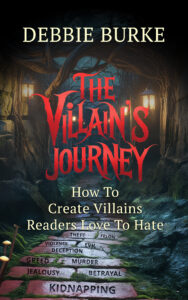

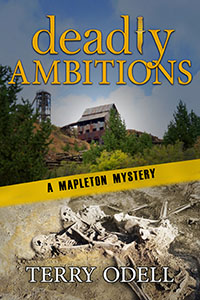

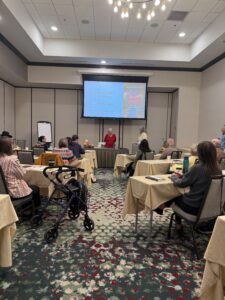 Two weeks ago, I reviewed the 35th Annual Flathead River Writers Conference in Kalispell, Montana. If you missed that, here’s the
Two weeks ago, I reviewed the 35th Annual Flathead River Writers Conference in Kalispell, Montana. If you missed that, here’s the 
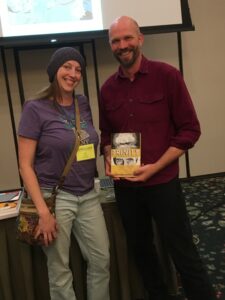
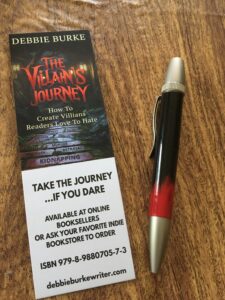 A writing conference is a great chance to build a mailing list. I took the opportunity to encourage sign-ups for my list with a prize drawing—a hand-crafted wood pen inspired by my book,
A writing conference is a great chance to build a mailing list. I took the opportunity to encourage sign-ups for my list with a prize drawing—a hand-crafted wood pen inspired by my book, 